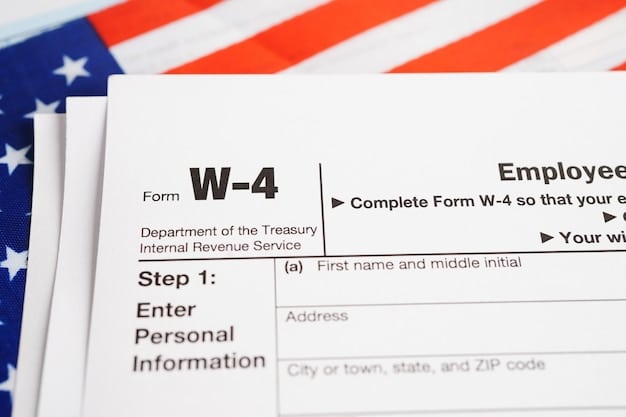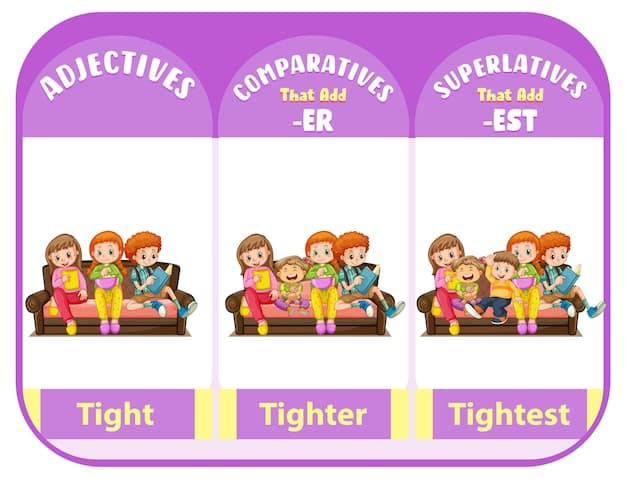FAFSA Updates 2025-2026: What’s New & How to Apply

The latest updates to the Free Application for Federal Student Aid (FAFSA) for the 2025-2026 academic year include expanded eligibility for Pell Grants, a streamlined application process with fewer questions, and adjustments to the Student Aid Index (SAI) calculation, making it easier for students to access financial aid.
Navigating college finances can feel daunting, but understanding the latest updates to the Free Application for Federal Student Aid (FAFSA) for the 2025-2026 Academic Year is a crucial step for students seeking financial aid.
Understanding the FAFSA Simplification Act for 2025-2026
The FAFSA Simplification Act represents a significant overhaul of the federal student aid system. These changes aim to streamline the application process and expand access to financial aid for more students.
Let’s explore how these changes will affect the 2025-2026 FAFSA application cycle.
Key Goals of the Simplification Act
The FAFSA Simplification Act has several key goals, including making the application process easier to understand and reducing barriers to financial aid for eligible students.
Here are some of the main objectives:
- Simplified application form with fewer questions.
- Expanded Pell Grant eligibility.
- Revised needs analysis formula.
These changes are intended to make college more accessible and affordable for a wider range of students.

Significant Changes to the FAFSA Form
One of the most noticeable changes to the 2025-2026 FAFSA is the reduction in the number of questions on the form. This aims to make the application process less overwhelming for students and families.
Let’s dive into the specific changes.
Reduced Number of Questions
The FAFSA form has been significantly shortened, reducing the number of questions that students and families need to answer. This streamlining is intended to save time and reduce confusion.
Removal of Certain Financial Questions
Some financial questions that were previously required have been removed or modified. This includes questions about certain assets and income thresholds, simplifying the reporting process.
Adjustments to Dependency Status Questions
Changes have also been made to the questions used to determine a student’s dependency status. These changes aim to provide a more accurate assessment of a student’s financial needs.
By simplifying the application, more students may be encouraged to apply for financial aid, ultimately increasing access to higher education.
Impact on Pell Grant Eligibility
The FAFSA Simplification Act has a direct impact on Pell Grant eligibility, with expanded access for more students. These changes ensure that more students with financial needs can receive support to pursue their education.
Here’s what you need to know.
Expanded Income Eligibility
The income thresholds for Pell Grant eligibility have been adjusted, allowing more low- and middle-income students to qualify for these grants. This expansion helps reduce the financial burden of college.
Increased Maximum Pell Grant Amount
While the maximum Pell Grant amount is subject to annual appropriations, the Simplification Act aims to increase the overall investment in Pell Grants, potentially leading to higher award amounts for eligible students.
Automatic Pell Grant Eligibility
The new FAFSA includes provisions for automatic Pell Grant eligibility for certain students, such as those from families who receive SNAP benefits. This simplifies the process and ensures that eligible students receive the aid they need.
- Check eligibility requirements carefully.
- Apply early to maximize aid opportunities.
- Understand the terms and conditions of the grant.
These changes make Pell Grants a more accessible and reliable source of financial aid for students pursuing higher education.
Understanding the Student Aid Index (SAI)
The Expected Family Contribution (EFC) has been replaced by the Student Aid Index (SAI) in the FAFSA formula. This change aims to provide a clearer picture of a student’s financial need and potential aid eligibility.
Let’s break down the details.
What is SAI?
The Student Aid Index (SAI) is a new metric used to determine a student’s eligibility for federal student aid. It takes into account a student’s and their family’s financial resources to assess how much they can contribute to college costs.
How SAI Differs from EFC
Unlike the Expected Family Contribution (EFC), the SAI provides a more nuanced assessment of financial need. It includes adjustments to consider factors such as family size and income level, offering a more accurate picture of a student’s ability to pay.
Impact of SAI on Financial Aid Awards
The SAI plays a crucial role in determining the amount of financial aid a student receives. A lower SAI generally results in a higher financial aid award, making college more affordable for students with significant financial need.

Tips for Completing the 2025-2026 FAFSA
Completing the FAFSA can still seem challenging, but with the right preparation and information, you can navigate the process successfully and maximize your chances of receiving financial aid.
Here are some helpful tips.
Gather Necessary Documents
Before you begin the FAFSA, gather all the necessary documents, including your Social Security number, tax returns, and bank statements. Having these documents readily available will streamline the application process.
Start Early
The FAFSA becomes available on October 1st each year. Applying early increases your chances of receiving more financial aid, as some aid programs have limited funding. Aim to submit your FAFSA as soon as possible after it opens.
Double-Check Your Answers
Accuracy is crucial when completing the FAFSA. Double-check all your answers for errors or omissions before submitting the form. Mistakes can delay processing and potentially reduce your aid eligibility.
By following these tips, you can confidently complete the FAFSA and secure the financial aid you need to achieve your educational goals.
Additional Resources and Support
Navigating the FAFSA and the financial aid process can be overwhelming, but numerous resources and support systems are available to help you along the way. Knowing where to turn for assistance can make the process much smoother.
Let’s explore some valuable resources.
Federal Student Aid Website
The official Federal Student Aid website offers extensive information about the FAFSA, financial aid programs, and eligibility requirements. It’s a valuable resource for understanding the process and finding answers to your questions.
College Financial Aid Offices
College financial aid offices are staffed with professionals who can provide personalized assistance with the FAFSA and financial aid process. They can answer your specific questions and help you navigate the complexities of student aid.
Nonprofit Organizations
Several nonprofit organizations offer free FAFSA assistance and financial aid counseling. These organizations can provide unbiased advice and support to help you make informed decisions about your education and finances.
- Utilize the Federal Student Aid website for reliable information.
- Contact your college’s financial aid office for personalized assistance.
- Explore nonprofit organizations offering free FAFSA support.
With the right resources and support, you can successfully navigate the FAFSA and secure the financial aid you need to achieve your educational goals.
| Key Point | Brief Description |
|---|---|
| 📝 Simplified Form | Fewer questions make the application process quicker. |
| 🎓 Expanded Pell Grant | More students with financial need can access Pell Grants. |
| 🧮 Student Aid Index (SAI) | Replaces EFC for a clearer picture of financial need. |
| 🗓️ Apply Early | Submit FAFSA ASAP after October 1st for best aid chances. |
Frequently Asked Questions (FAQ)
▼
The FAFSA Simplification Act is a federal law that aims to streamline the FAFSA application process and expand access to federal student aid for eligible students and families.
▼
The FAFSA typically becomes available on October 1st of each year. Students can begin completing the application form on this date for the upcoming academic year.
▼
To complete the FAFSA, you will generally need your Social Security number, tax returns, W-2 forms, bank statements, and records of any untaxed income. Dependent students will also need parental information.
▼
The Student Aid Index (SAI) is a metric used to determine a student’s eligibility for federal student aid. It replaces the Expected Family Contribution (EFC) and provides a clearer picture of financial need.
▼
Help is available through the Federal Student Aid website, college financial aid offices, and nonprofit organizations that offer free FAFSA assistance and financial aid counseling. Reach out to these resources for support.
Conclusion
Understanding the latest updates to the FAFSA for the 2025-2026 academic year is essential for students seeking financial aid. With a simplified application, expanded Pell Grant access, and the new Student Aid Index, navigating college finances has become more accessible. By staying informed and utilizing available resources, students can confidently apply for aid and achieve their educational goals.






